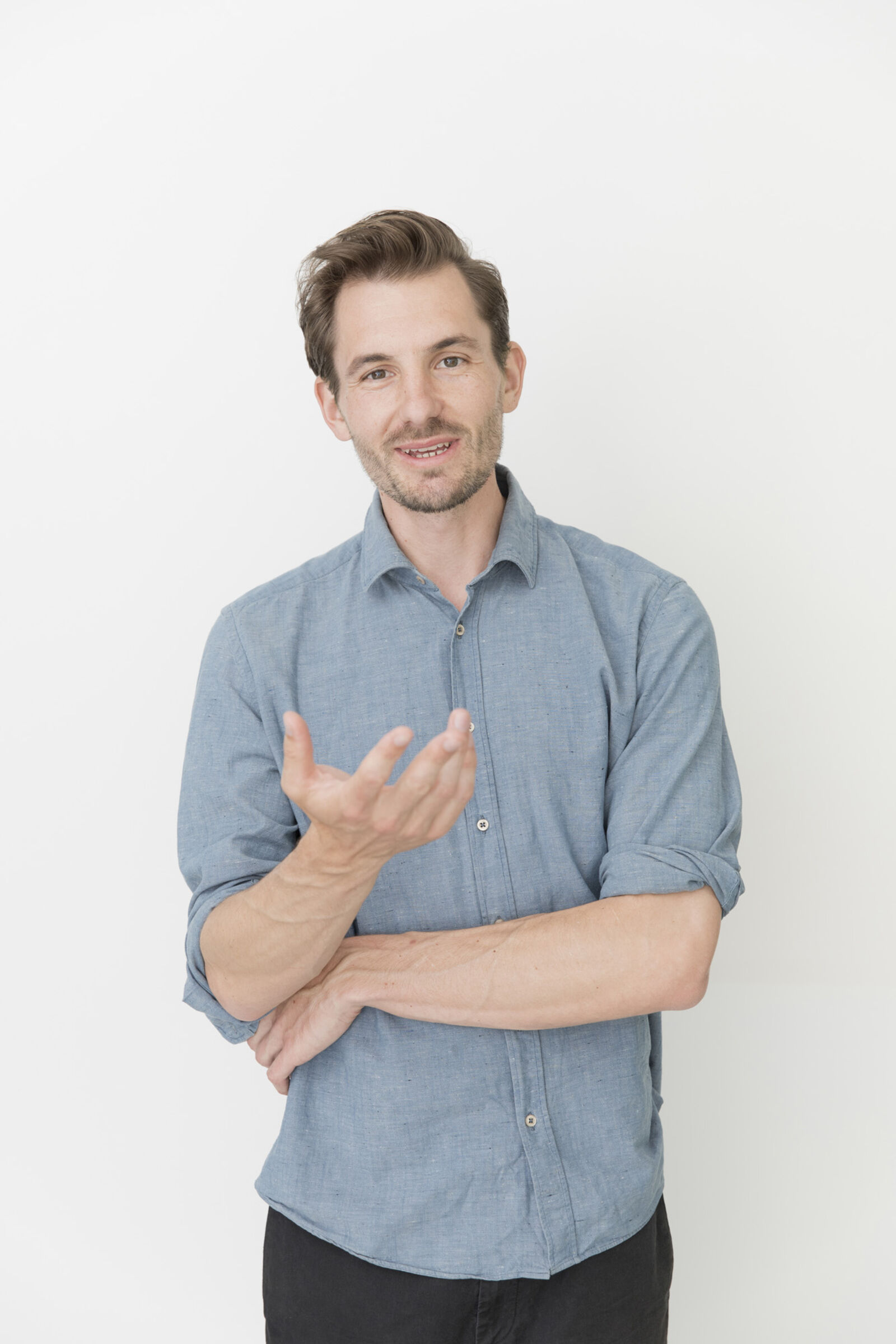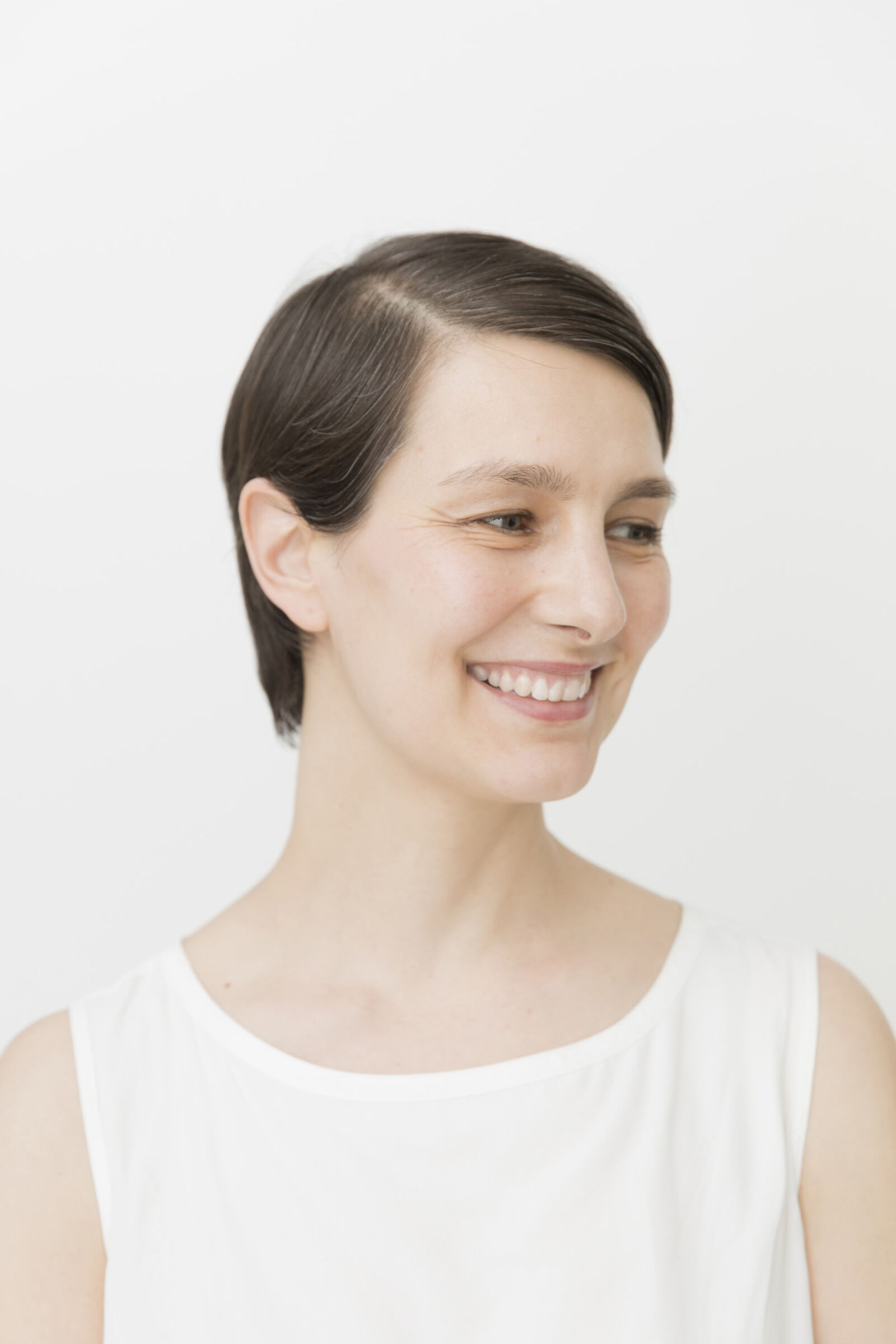Bacterial Cellulose: Co-Weaving Biofilms
An Installation for the Triennale XXIII: »Unknown Unknows, An Introduction to Mysteries«
Cellulose of different forms and origins is woven together in this structure: pieces of wood, paper threads and biofilms grown by bacteria. A collaborative textile is created – human, plant and microbial. Three MoA research projects, Weaving, Material Form Function and Object Space Agency and with that many MoA Members worked together on the project »Bacterial Cellulose: Co-Weaving Biofilms« shown at the Triennale di Milano XXIII »Unknown Unknows, An Introduction to Mysteries«, in the thematic exhibition »Alchemic Laboratory«, curated by Ingrid Paoletti, from July 15th to December 11th, 2022.









About the XXIII Triennale International Exhibition
The Triennale Milano International Exhibition, which in 2023 will celebrate 100 years since its foundation, is one of the most important events devoted to design and architecture in the international field. Every three years it presents the most relevant and innovative research and projects, displaying new currents of thought. The 23rd edition addresses the theme of the unknown, asking questions about the mysteries of the known world, and opening up a discussion concerning the issue of »what we do not know that we don’t know.« Unknown Unknowns puts forward a new way of looking at the topic, not by means of polarizations — light/dark, full/empty, science/art — but as an opportunity for investigation: from the furthest universe to dark matter, from the bottom of the oceans to the origin of our conscience. The unknown thus becomes a dimension to be experienced, no longer in opposition to what we do not know that we don’t know, but as an element of surprise faced with the vastness of what escapes us.
Unknown Unknowns: An Introduction to Mysteries takes the form of a constellation of exhibitions and projects, and brings together 400 artists, designers, architects, and scientists from more than 40 countries; 23 international participations. The mains curators of the manifestation are Ersilia Vaudo, astrophysicist and Chief Diversity Officer at the European Space Agency (ESA), and Francis Kéré, founder of Kéré Architecture and winner of the Pritzker Architecture Prize 2022. In line with the tradition of Triennale’s International Exhibitions, the 23rd edition includes the thematic exhibition, curated by Ersilia Vaudo, and a section dedicated to international participations. Together with the thematic display, the 23rd International Exhibition also hosts two major exhibitions: Mondo Reale, curated by Hervé Chandès, General Artistic Director of the Fondation Cartier pour l’art contemporain, and La tradizione del nuovo, curated by Marco Sammicheli, Director of Triennale’s Museo del Design Italiano. There will also be a series of installations and special projects that will see the involvement of the art historians Giovanni Agosti and Jacopo Stoppa, the musician and writer Francesco Bianconi, the philosopher Emanuele Coccia, the researcher and lecturer at the Politecnico di Milano, Ingrid Paoletti, the artist and Triennale Grand Invité for 2021-2024 Romeo Castellucci, and a master of architecture and design, Andrea Branzi.
About the Thematic Exhibition: »Alchemic Laboratory«
The alchemic laboratory is an experiential place that invites the visitor to question the concept of matter. The laboratory is yellow: yellow like that of nature – which serves to attract pollination –, yellow like the lights that protect the micro-electronics sensors from direct radiation and finally citrinas – yellow lemon – as one of the four colors of the alchemical transmutation.
We tend to think at the transformation of matter as a linear and predictable scientific process, but what happens if the boundaries between natural/artificial, alive/inert, extractive/grown, blur? A series of energy, environmental, health and social crises has given us a bitter lesson: nature can be unavailable and not respond to our desires. So, if we lose the control of the process, if we believe in a new conscious material culture, if the material asserts its design reasons, this path opens to imagination, to the unexpected, to the creative vitality.
The exhibition showcases 4 different installations on self-healing polymers, mycelium insulation materials, moss electricity production and bacterial cellulose.
Curated by Ingrid Paoletti, Politecnico di Milano, in collaboration with Anna Barbara, Liberato Ferrara, Antonio Grande, Sara Mantero, Maria Anischenko, Yagmur Bektas, Beatrice Belgio, Marta D’Alessandro, Olga Beatrice Carcassi, Giorgio Castellano, Danilo Casto, Valeria Marsaglia, Saverio Spadafora, Politecnico di Milano, Stefano Gomarasca, Università Statale di Milano, Paolo Bombelli, Cambridge University, Federico Leoni, Università di Verona, Claudia Mareis, Bastian Beyer, Emile De Visscher, Moritz Liedtke, Natalija Miodragović, Iva Rešetar, Daniel Suárez, Regine Hengge and Skander Hathroubi of the Cluster of Excellence »Matters of Activity. Image Space Material«, Humboldt-Universität zu Berlin, Massimo Gatelli, Milleforma
About the Installation »Co-Weaving with Bacteria«
Cellulose is the most abundant organic compound occurring in nature. As the skeletal component of the cell walls of all plants, cellulose has a unique fiber morphology. In combination with hemicellulose, lignin, and pectin, cellulose is arranged in hierarchical organizations that give these biological materials outstanding properties, such as great yet variable tensile strength. In addition to plants, certain bacteria, algae, and fungi are also capable of synthesizing cellulose. These biological composites differ from the homogenous, monolithic structures found in plastics, concrete or metals: with a few constitutive elements and a multitude of possible configurations, they grow and adapt to changing environmental conditions which are reflected in their structure.
Bacteria produce cellulose to form biofilms – fibrous assemblages that gather colonies of individual microorganisms. As communities of bacteria, biofilms are places where diverse multispecies act as a collective entity in cooperation and conflict. Bacteria build, maintain and live in this gelatinous matrix of a fibrous microstructure. The material created during biofilm growth is also called nano-cellulose since cellulose particles have at least one dimension in the nanometer range. We experiment with the bacterial species of the genus Komagataeibacter called K. xylinus which belongs to the group of acetic acid bacteria known for extensive cellulose production. Unlike that of photosynthetic plants, its growth does not require light, but a warm environment and nutrients. These biofilms are visible on the human scale, allowing for the direct interaction with its growth process and hence for speculation on how it can become part of our living spaces on a larger scale.
The growth of bacterial cellulose is fundamentally different from industrial production: it does not involve extraction from other materials, as the bacteria produce chemically pure cellulose. Few resources and little energy are needed in the process, which can be undertaken in domestic or citizen science contexts as well as in the laboratory.
By seeking to understand cellulose-based bacterial biofilms as materials and living organisms simultaneously, the notion of design and manufacturing changes fundamentally, prompting us to acknowledge its intrinsic activity and aliveness. Instead of relying — as in the case of synthetic polymers — on a predetermined process, bio-fabrication disrupts this procedure and challenges our roles as designers. This shift is from simply envisioning a final product and materializing it toward designing boundary conditions in which organism and structure can develop. Here, the materials are not passive and obedient entities within the design process: bio-design calls for a bottom-up approach that guides materials during growth, rather than imposing shapes onto raw materials. In other words, the main task is to design an environment for growth – dynamic processes and relations – rather than forms and structures.
In this installation, we co-design environments and fibrous structures with bacteria connecting different scales – microbial and human. The two textile systems, the biofilm and the thread intersect with each other. In contrast to the biofilm, the secondary textile network follows a designed pattern and geometry on a macro scale, providing a scaffold for the biofilm to develop. The textile scaffold is located directly at the air-liquid interface. These intersection areas not only allow both systems to merge but likewise influence the growth of the biofilms with their fibrous microstructure, actively responding to the textile scaffold.
During growth, a gradient between the fuzzy boundary of the textile scaffold and the biofilm emerges. In this gradient, the fibers of the scaffold entangle with the nano-cellulose to form a structural bond. Rather than being glued to each other these structures grow together. In this unique textilic milieu we observe the reciprocal and fluid relationship between the nano, micro and meso scale.
Triennale di Milano
Viale Emilio Alemagna, 6
20121 Milano MI
Italy









